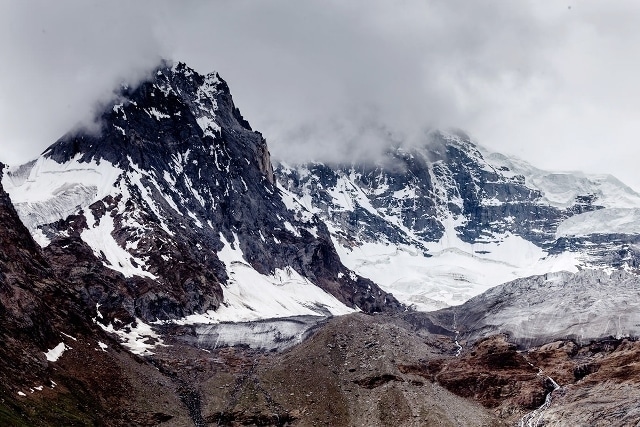Mar 16 2016
Uncertainties are a fact of life for those who model climate change and the factors that amplify or moderate its effects. One important dynamic in climate change studies is the extent of permafrost (permanently frozen soils) in the northern high latitudes and the rate at which it defrosts as the climate warms.
 A new computer model better predicts the extent of permafrost area and stability in the northern high latitudes, researchers report. (Photo by Rahul Barman)
A new computer model better predicts the extent of permafrost area and stability in the northern high latitudes, researchers report. (Photo by Rahul Barman)
Scientists from the University of Illinois report they have found a way to improve predictions of permafrost area and stability in the northern high latitudes. By including four key biophysical processes in their computer model – soil organic carbon, compacted snow, frozen ice crystals in the soil and the transfer of heat from shallow ground to much deeper soils – the researchers are able to estimate permafrost area and permafrost lost as a result of climate change more accurately than previous models have. Their model also suggests that permafrost has declined more slowly in recent decades than previously thought.
The study is reported in the Journal of Advances in Modeling Earth Systems.
“These four processes are crucial to understanding the dynamics of the permafrost and the changes occurring in the northern high latitudes,” said University of Illinois atmospheric sciences professor Atul Jain, who led the new analysis with Ph.D. student Rahul Barman. “And they are not being accounted for in other climate modeling studies.”
Permafrost is a major player in the climate cycle, Jain said.
“There is a huge amount of nutrients such as carbon and nitrogen stored in the permafrost,” he said. “If this frozen soil melts due to climate change, you could expect all the nutrients stored to be released to the atmosphere, triggering further climate change.”
The new model focused on continuous (90-100 percent of the land area) and discontinuous (50-90 percent) permafrost areas in the northern high latitudes.
Barman, who conducted this work as part of his Ph.D. research, used an Earth System model, which accounts for several key processes influencing permafrost stability. He incorporated the four additional processes discussed above into his model, testing each individually – and all of them together – against previous models and actual measurements of permafrost dynamics. He demonstrated that adding the four additional processes greatly improved the accuracy of the model.
“Soil organic carbon has a very dynamic effect on thermal energy in the summer and in the winter,” Jain said. The carbon acts as an insulator, keeping the soil cooler in summer and warmer in winter.
“Frozen crystals in the upper layers of soil act as insulation, trapping warmth in the soil in winter,” Jain said. “And while thick snow also insulates the soil, snow compaction due to winds allows more heat to escape to the atmosphere.”
The new model also is unique in that it accounted for thermal energy fluxes down to 50 meters below the surface. This allowed Barman to study a previously underestimated phenomenon: Heat transfer from shallow soils to deeper soils helps maintain permafrost stability.
“Our study shows that including detailed analyses of cold-region biogeophysical processes in models of permafrost extent and degradation greatly improves the models,” Jain said. “It also suggests that improving our understanding of other influences, such as climate change variability, land-use and land-cover changes, also will produce notable differences in the accuracy of models of northern high-latitude permafrost area. More work must be done to further improve our models.”
The National Aeronautics and Space Administration and the U.S. Department of Energy Office of Science supported this research.